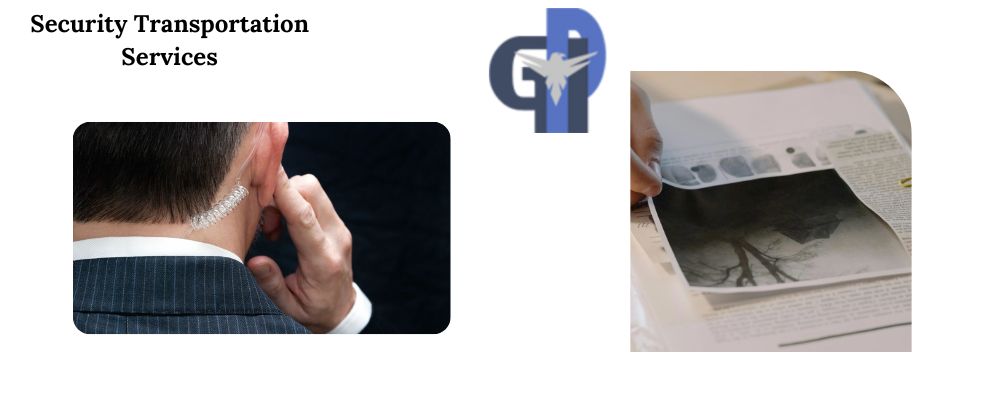How Defense Counterintelligence and Security Transportation Work Together?

According to the Global Risks Report by the World Economic Forum, cyberattacks, espionage, and insider threats have surged in recent years, making the protection of high-value targets more complex than ever before. For those in the government sector, preventing insider threats and securing sensitive data is critical. High-profile individuals, such as executives and diplomats, also face unique security risks, especially during transit when transporting valuable assets.
This is where background checks and physical security form the line of defense in carrying out sensitive operations involving defense counterintelligence background intelligence, and security transportation services.
Let’s explore how these two security measures work together to provide comprehensive protection in today’s high-risk environment.
Understanding Defense Counterintelligence Background Investigation
Defense counterintelligence background intelligence is designed to protect national interests by identifying, neutralizing, and preventing espionage, sabotage, and other threats posed by foreign and domestic adversaries. These operations involve the collection of intelligence, surveillance, covert actions, and the infiltration of hostile organizations to prevent attacks and infiltrations. The key objective is to stay one step ahead of those attempting to gain unauthorized access to sensitive data, technology, or personnel.
The Role of Security Transportation Services
It is a secure transportation for protecting individuals, assets, and sensitive information during transit. It goes beyond standard transportation, offering specialized services like route planning, risk assessments, and real-time monitoring. Security transportation services become crucial for ensuring the safe movement of high-value assets, sensitive information, and key personnel. These are integral to maintaining operational security during transit, particularly in high-risk environments or regions.
The Synergy Between Counterintelligence Operations and Security Transportation Services
The collaboration between defense counterintelligence background investigation and security transportation services is a cornerstone of modern security strategies. When combined, they offer a holistic defense mechanism that not only prevents external threats but also mitigates internal vulnerabilities.
Together, these disciplines form an unbreakable security chain that guarantees the safe and efficient movement of high-value assets, high-profile individuals, personnel, and sensitive information. The dynamic and proactive relationship between these two sectors ultimately strengthens the overall security posture. It enables organizations and governments to maintain a strategic advantage in an increasingly complex threat landscape.
Real-Time Threat Detection and Response
Defense counterintelligence background investigation continuously monitors and assesses potential threats, providing actionable intelligence that directly impacts security transportation strategies. By identifying emerging risks, teams enable security transportation services to adjust in real-time, altering routes, increasing personnel, or adding security measures.
This proactive approach helps mitigate risks before they can escalate, ensuring that high-value assets and personnel are protected throughout transit, even in volatile regions. The timely exchange of intelligence between both sectors ensures that security teams remain prepared to respond swiftly to any unexpected challenges or adversarial actions.
Insider Threat Identification and Mitigation
Defense counterintelligence background investigation plays a crucial role in identifying potential insider threats within organizations or during transit operations. Through surveillance, monitoring, and background checks, teams can detect individuals with access to sensitive information who may compromise security.
Security transportation services then work with this intelligence to prevent or counter any risks posed by insiders. For example, adjusting security protocols, increasing checks on personnel, or providing additional training to transportation teams ensures that the risk of sabotage, manipulation, or spying is minimized during sensitive transfers.
Dynamic Route and Schedule Adjustments
Both defense counterintelligence background investigation and security transportation services thrive on flexibility and adaptability. Counterintelligence teams continuously evaluate the security environment and predict potential threats to transportation operations. By sharing insights, they enable security teams to modify travel routes or alter schedules based on real-time threats, such as ambushes, surveillance, or attacks.
This dynamic collaboration allows security transportation services to stay ahead of adversaries. It ensures that high-value targets or critical assets are moved with minimal exposure, thus maintaining a high level of operational security throughout the journey.
Enhanced Protection for High-Profile Individuals and Assets
Defense counterintelligence background investigation provides detailed assessments of threats targeting high-profile individuals or valuable assets. By leveraging intelligence on adversary capabilities and intentions, the team informs security transportation services about specific risks to these individuals during transit.
Security teams then implement specialized measures, such as secure convoys and additional covert surveillance, to protect key targets. This close coordination ensures that, regardless of external threats or public exposure, high-profile individuals and sensitive cargo are safely transported without compromising security.
The Bottom Line
Studies show that over 70% of corporate security breaches stem from internal threats, highlighting the importance of counterintelligence operations. When combined with security transportation services, they form a robust, multi-layered defense strategy.
Background checks identify potential risks, while secure convoys protect high-profile individuals and assets during transit. This integration ensures comprehensive protection against both internal and external threats. By leveraging defense counterintelligence background investigation and specialized security transportation services, organizations and individuals can adapt to emerging risks in real time, providing enhanced security and operational flexibility. This approach offers peace of mind in today’s volatile security environment.
